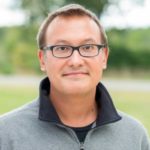Description
The 2nd Computational Processing for Users (CPU) will be held in Nov 5, 2019, at the Brazilian Synchrotron Light Laboratory and is intended to discuss the mathematical and computational aspects related to data processing and their distributed computing, currently in use at our facility.
The main objective of the workshop is to provide an opportunity for the community to share their research in areas related to image reconstruction and segmentation, and general high-performance computing for data processing, among other numerical techniques related to a synchrotron beamline. The workshop will offer an overview of the main theory together with several examples.
Program
Local: Seminar Room
Invited Speakers Abstracts
Short bio: Dr. Doga Gursoy is a computational scientist at the Advanced Photon Source at Argonne National Laboratory. He is also an adjunct assistant professor at the Electrical Engineering and Computer Science Department at Northwestern University, and a fellow of Northwestern Argonne Institute of Science and Engineering. His research focus is on the development of computational methods for imaging applications. He is also interested in development of new design concepts for improving the spatial and temporal resolution of x-ray microscopy systems.
Title: “Computational methods and challenges in high-throughput x-ray imaging”
As the sophistication of today’s experiments grow at synchrotron light sources, collecting and processing the most informative data has become greatly relevant, necessitating the development of methods and techniques that can provide good quality reconstructions from high-throughput data streams. Overcoming these challenges commonly requires developing better approximations of physical systems, and when these approximations are not available or too costly to compute, approaches based on machine learning can facilitate the process. In this talk, I will first give a broad overview of the status of computational methods and challenges in computational imaging applications at the synchrotrons, and then describe how existing computational imaging tools can be used to enable faster and reliable experimentation. I will also report our progress on building the software and hardware infrastructure for having successful data processing pipelines, which will be especially important after realization of the next generation of x-ray sources providing orders of increased brilliance and coherence.
Short Bio: Elias Helou (USP)
Title: What is superiorization and how it can be Applied to tomographic image reconstruction
Abstract: Superiorization is a general framework for the modification of algorithms with many applications to image processing and reconstruction.
In this talk we will describe the idea of superiorization and give example applications to tomographic image reconstruction.
Short Bio: Johannes Stegmaier (RWTH Aachen)
Title: “Automatic segmentation in large-scale 3D+T microscopy image data”
Abstract: Modern light-sheet and confocal microscopes allow capturing 3D videos of entire embryos over multiple hours of their early life. These videos enable, for instance, analyzing the development of model organisms such as plants like A. thaliana or animal models like the fruit fly, zebrafish or mouse embryos from the moment of fertilization up to a stage with several thousands of cells after multiple rounds of cell divisions. The analysis of cell migration, cell ancestry and cell shape changes over time in the entire embryo yields detailed information about developmental processes such as the establishment of body axes, the formation of entire organs or the characterization of developmental differences of wild-type versus mutant embryos. Fluorescent proteins allow highlighting specific structures (e.g. cell nuclei or cell membranes) of a model organism that can be imaged at high speed and with high spatial resolution. However, the huge amount of 3D image data, where single light-sheet microscopy experiments routinely accumulate multiple terabytes of image data, would require months or even years of manual investigation. Thus, sophisticated image analysis algorithms are required to obtain quantitative information from the image data. In this lecture a set of fast algorithms will be presented that allow segmentation of large-scale 3D+t microscopy experiments with fluorescently labeled cell nuclei and cell membranes of entire embryos in 3D automatically, reliably and fast. The approaches also comprise state-of-the-art deep learning methods like convolutional neural network-based semantic segmentation and training data synthesis using generative adversarial networks.
This is a satellite event to the 29th edition of the LNLS Annual Users Meeting (RAU).
